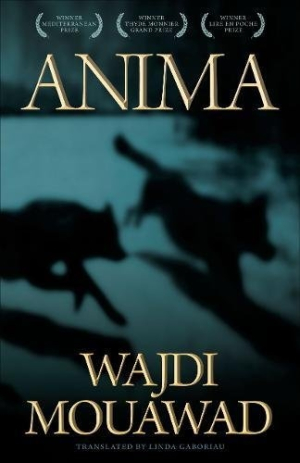Anima
On one level, the book is a classic murder mystery; on a deeper level, it echoes humanity at its most primal.
Nature may be red in tooth and claw, but in Wajdi Mouawad’s outstanding novel, Anima, it’s humans who are claw-deep in red and animals who benignly observe.
Anima begins with the discovery of a brutal murder. The murderer is unknown, and the victim’s husband is the unlucky discoverer of her body. The details of the murder, unsparingly revealed in the coroner’s report, are so savage that they’re difficult to read.
The husband’s emotional aftermath is narrated by various animals who relate bits and pieces of the story, with grief laid bare on every page. But wait: something isn’t quite right here. Two animals, a rat and a skunk, not only fail to note the husband’s mourning, but they see him as one of their own.
On one level, the book is a classic murder mystery; on a deeper level, it echoes humanity at its most primal. The animals who tell the tale soar above all, overlaying the harsh, monochrome world of humans with glimpses of a richer world, wonderful in its variety but heartbreakingly beyond our perception.
Such narrative choices could easily become gimmicky or precious, but the writing here is neither. The animals are anthropomorphized just enough to allow for comprehension, while their own concerns—the crazed hunger of an ant before spring brings fresh vegetation; a dog torn between his desire to explore and his devotion to the woman who commanded him to stay put—are convincingly woven into the developing plot.
There’s also sophisticated wordplay concealed in certain chapter titles. Each animal is identified by its Latin name, but some names are extended to include sly, faux-Latin references. A chapter narrated by a mourning cat who has taken to hiding behind a bookcase is titled “Felis Silvestris Catus Carthusianorum,” suggesting that the cat is following the path of Carthusian monks who chose lives of isolation and deep contemplation.
Startling, inventive, and beautifully crafted, Anima conveys small themes as well as large ones, and does so in a beguiling framework that effectively balances the story’s underlying savagery.
Reviewed by
Susan Waggoner
Disclosure: This article is not an endorsement, but a review. The publisher of this book provided free copies of the book to have their book reviewed by a professional reviewer. No fee was paid by the publisher for this review. Foreword Reviews only recommends books that we love. Foreword Magazine, Inc. is disclosing this in accordance with the Federal Trade Commission’s 16 CFR, Part 255.

